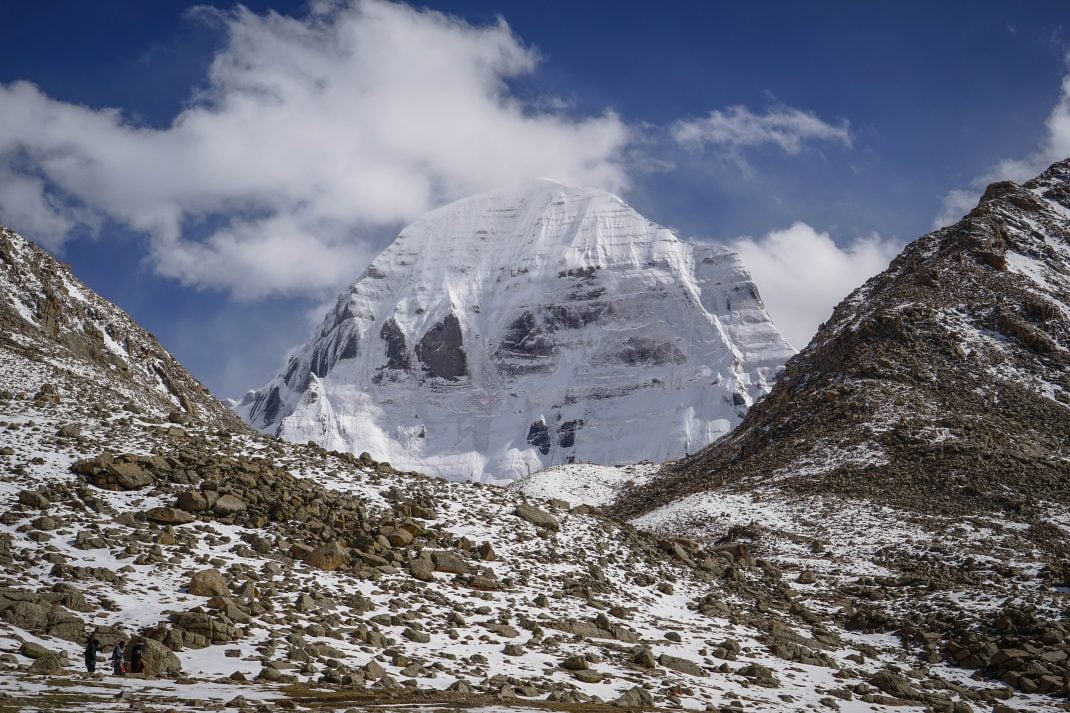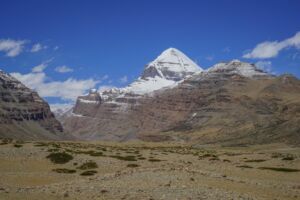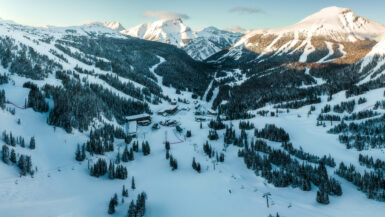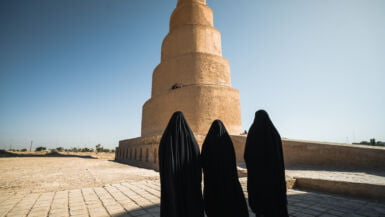Ngari, Mount Kailash, Tibet
A place so tranquil yet powerful, Mount Kailash contradicts itself. As you labour one foot after another, oxygen deprived and lost in a sea of emotions, just as pilgrims for thousands of years have done, in the exact same fashion. This journey will change you, after traversing the entire Kora around the worlds most holy mountain you become a part of it. A chapter of this mountains story. Finally, when the air becomes so thin that I fear I’m at my breaking point, I look up, I have arrived. A scene of what heaven must look like, Mount Kailash’s highest point the Drolma-la pass. Here time stands still, pausing for a sigh of relief, its hard not to connect with it all, never has a moment like this brought me so far into the depths of my mind. This is the Mount Kailash Kora.
Getting to Mount Kailash
Whatever road you take to Kailash you will inevitably pass through Saga. Saga is the midway point for all journeys to Kailash. Getting to Saga will take at least two days from Lhasa if you drive direct. Most however, take the road to Everest Base Camp first, and then onward passing by one of Tibet’s otherworldly high-altitude lakes, Peiku-tso.

Peiku-tso sits at 4590 m, and is one of Tibet’s most beautiful lakes. Stopping here I took my shoes off and walked ankle deep in the frigid blue waters observing shepherds push their flocks of sheep along the multi coloured shores all whilst Shishapangma and the snow-capped Langtang Range loom in the distance beyond. It’s a surreal scene and well worth the stop on route to Saga.

From Peiku-tso it is another few bumpy hours drive to Saga. Saga is a Tibetan truck stop frontier kind of town. Here there is a small spatter of hotels and restaurants, but not much for the curious traveler. I stayed in a small truck stop hotel which featured paint peeling, ice cold unheated rooms, and a smoke-filled restaurant filled with Tibetans who look as if they had just finished the kora themselves. The meat dumpling soup was rather delicious although!

Lake Manasarovar
From Saga, the road continues west crossing multiple 5000 m plus mountain passes, dozens of Chinese military checkpoints, and the starkly beautiful sand dunes of Zhongba. Zhongba’s sand dunes offer the chance for you to capture white capped Himalayan peaks, bright blue bodies of water, intensely green grassland, and soaring sand dunes all in the same shot. It is a photographer’s dream.

Continuing west of Saga we reached the days pit stop Lake Manasarovar after about 9 hours of driving. When you finally reach these holy shores, it feels as if you have been traveling for ages, and for good reason as you have almost crossed the entire Tibetan Plateau.
Lake Manasarovar is Tibet’s (probably the worlds) most sacred lake. For approximately 1700 years Hindu’s and Buddhists have been bathing, and circling this sapphire blue, mountain fringed lake. Hindus believe that Manasarovar is a manifestation of Brahma, while Tibetans revere it because mother of the Buddha was bathed here by the gods before giving birth to Buddha. It is also noted that Mahatma Gandhi’s ashes were put in the lake.

Whatever the case is bathing here erases sins of a hundred lifetimes. So even though there was ice on the shoreline, and snow flakes flying in the air, I stripped down and dove into the waters. From the lack of oxygen in the air, and the fact I could not breath after submerging in what felt like the coldest water in my life, I felt blessed and prepared for the next leg of my journey to Kailash.

Lake Manasarovar Chiu Monastery
In the morning, the ground was covered in a thick blanket of snow. I walked to Lake Manasarovar’s Chiu Monastery for more blessings. Nearing the monastery, you are confronted with Tibetan horns that sounds rang across the valley. Entering the juniper incense filled interior you are greeted by nuns who pour you a glass of warm yak butter tea.
As the ceremony proceeds an orchestra of Tibetan instruments are played, including a Kapala drum, which is the tops of two human skulls crafted into a double-sided drum. It was a special feeling to be connected with the Tibetan way of life by partaking in the ceremony. Do not fret if you are unaware of what to do in the ceremony, the Tibetans will guide you through it.
The Mount Kailash Kora
Before you hike the 52km around Mount Kailash there are some preparations you must consider. First is the gear, in Darchen town which is the beginning point of the trek you can acquire plenty of snacks, warm clothing, and whatever other creature comforts are essential to you.
Secondly, understanding the direction people choose to walk around the mountain. Buddhists and Hindus walk clockwise while the ancient religion of Tibet Bon, walk anti clockwise. Tibetans also tend to walk the entire circuit in one day, but this is surely too much for a unworthy low altitude living traveler such as myself. So, three days is more appropriate.
Stage 1: Darchen to Dira-Puk Monastery
The first days 20km is not a hard journey. You only have an ascent of 200m, but the scenery is definitely not lacking. Going in the clockwise Buddhist tradition heading west from Darchen you cross into a large open valley providing you impeccable views of Kailash and the sacred valley that circles her.
Entering the valley your first point is Chorten Kangnyi, a small stupa covered in prayer flags. This is where the roads stop and many Indian pilgrims begin their journey. Nearby is the cliff side hanging Chuku Monastery. Further afield you will be given font row views to Kailash’s wester face.
Pilgrims murmur chants and preform their prostration, juniper incense floats through the cold breeze, yak bells clang in the distance, and mighty Kailash looms high above with a god like status.

The final leg of the journey brings you to Mount Kailash’s North Face. Here you will get your best views of the light changing colour over Kailash’s summit. The north face camp hosts a few small restaurants and basic accommodation, do not come here expecting luxury. South of the camp across the river is Dira-Puk. This monastery provides yet more incredible views of Kailash’s North Face, and a hermit cave where the saint Gotsangpa is said to have meditated.
Stage 2: Crossing the Drolma-la Pass 5630 m
I awoke in the early hours of the morning to join the pilgrims for sunrise at Kailash’s north face. As the sunrise the summit turns a bright gold. The air is cold, but the sight of Kailash will warm anyone’s soul.

After breakfast we hit the trail. From the North Face camp it goes only up from here. It’s a 600 m ascent to the summit of Drolma-la. North Face Camp is already set above 5000 m so expect symptoms of acute altitude sickness to set in as you climb.
The first bit of the climb was not so hard for me. Many were using oxygen at this time, but I said I would not out of stubbornness. 200 m up you are given a different view of Kailash, this time you are starring her right in the face. From here you cross a snowy valley before the final ascent to Drolma-la.
The steep incline takes every bit of will power to conquer. By this time the oxygen levels are half of what they are at sea level. Every step is agonizing, only to be made worse by watching an elderly Tibetan whizz passed me with ease. When I finally reached the summit, the adrenaline left me to feel the reality of what this place does to your body.
All the aches and pains aside I tied my prayer flag to the pass, while Tibetans threw mini flags into the air creating one of the most beautiful sights in my life.

From Drolma-la you go straight down. The pass is steep so be very cautious. After a few hours of descending you will reach Zutul-puk monastery. Here are more small tea houses offering lodging and food for the weary pilgrim. Its greener here as well, giving a good break from the blinding snows of Drolma-la.

Stage 3: Back to Darchen
This day is the easiest of the three, but quite possibly the most spectacular as now you have completely circled Mount Kailash. The last 14 km take you through rolling hills and beautiful views of the southern Himalayas. Only taking about 3 hours to get back to Darchen, you have plenty of time to reminisce on the journey you have just taken.
Super Charged Karma – Completing the Kailash Kora
After returning back to Darchen I went straight to the Darchen Teahouse. Nothing heals the body better than a warm cup of Sweet Tibetan tea, plus there is wifi! That afternoon we drove to the south side of Kailash to take in a view of how big this mountain really is. As long as the weather is clear you can see the trail that circles the mountain.

Nearby to Lake Manasarova are some hot springs. I highly recommend this after the Kailash Kora, the warm springs defiantly cure all ailments you may have received.
Useful Information
Location: Ngari Province, Mount Kailash, Tibet
Recommend Books: Lonely Planet Tibet, Lonely Planet Tibetan Language, 7 years in Tibet
Gear: Nomad Solar Panel, Sony a7rii, Gopro Hero Black
Top Tips: Make sure to drink a ton of water, it helps with the altitude. Take the journey slow, if you rush you really increase the chance of altitude sickness.
Tour Company: Tibetan Highland Tours



























Wow!! Would love to do this someday and your write-up is immensely helpful. Will try and get hold of recommended reading too. Please help with a list of gear and other preparations, if possible.
Thank you very much for sharing such a helpful information on Mt. Kailash trekking. Looking forward to hear more from you.